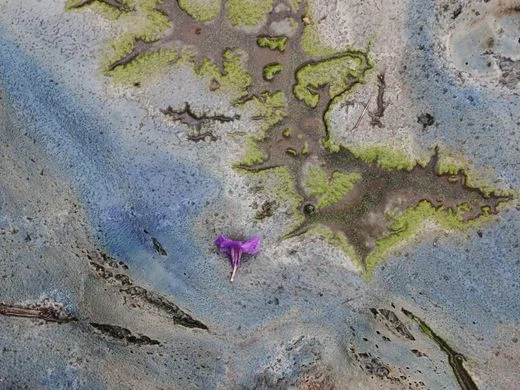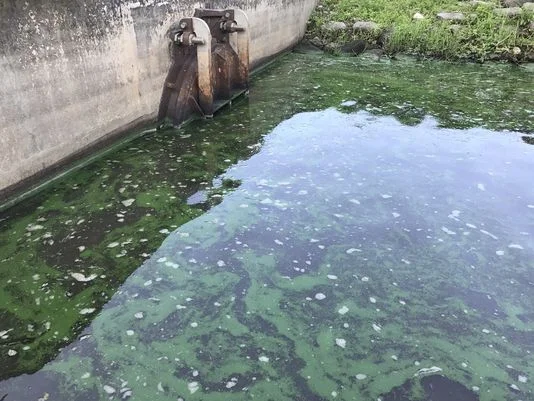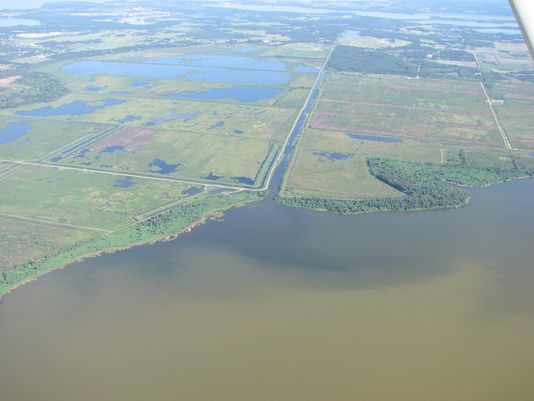Dispatches
Our Resource for Articles and Studies that Cover Florida’s Water Issues in Recent Years:
For anyone who considers protecting Florida’s waterways from their worst enemy — ourselves — this will be the most important election we vote in. Does clean water matter to you? Dead manatees. Poisonous toxic algae blooms. Canals sullied by foul runoff. Marshes paved over. Springs siphoned off for profit, then polluted. Septic tanks leaching into our waterways.
There were fewer new cases opened in 2021. 693 new cases were opened in 2021, compared to 742 cases in 2020. While the number of cases fell in 2021, the basic parameter of the number of new cases, judged by itself, was still significantly better than each of the years from 2012 through 2019. 2021’s performance is still only 44% of cases turned in by the agency in 2010. The graph below shows the number of new enforcement cases opened for the years from 2009 through 2021.
Harmful algal blooms (HABs) that result from the rapid growth of algae or cyanobacteria (also referred to as blue-green algae) in natural waterbodies can harm people, animals, or the environment. HAB events of public health concern are primarily caused by microalgae (e.g., diatoms and dinoflagellates), cyanobacteria, and the toxins they can produce. HAB events, which can be intensified by factors such as nutrient pollution and warmer water temperature, can have public health, environmental, and economic impacts.
For thousands of years, Lake Okeechobee pumped life into Florida’s swampy interior. Summer rains swelled the shallow inland sea, creating seasonal overflows that sustained the Everglades and its alligators, panthers, spoonbills and snail kites.
But a vast re-engineering over the past century has transformed Okeechobee into something life-threatening as much as life-giving. Toxic algal blooms now regularly infest much of its 730-square-mile surface during the summer, producing fumes and waterborne poisons potent enough to kill pets that splash in the contaminated waters, or send their owners to the doctor from inhaling the toxins.
Early in the 20th century, engineers blew up waterfalls and rapids in Miami rivers to clear the way for a canal. Wildcats scattered and fish floated to the surface, paralyzed. As legend has it, at least one alligator’s body went flying in the explosion, gawked at by local dignitaries.
The public should avoid contact with toxic algae near the east shore of Lake Okeechobee at the recreation area at Port Mayaca, according to a state health alert issued Thursday.
The cyanobacteria, more commonly called "blue-green algae," contained the toxin microcystin measuring 2.8 parts per billion in water samples taken May 1 on the lake side of the S-308 dam flood gate. When open, the gate allows lake water to enter the C-44, also called the St. Lucie Canal, in Martin County, 10 miles west of Indiantown.
The excessive heat across South Florida is fueling more toxic blue-green algae along the Treasure Coast.
The Florida Department of Health in Martin County issued a health alert Tuesday for the presence of harmful blue-green algal toxins in the C44 Canal near the boat ramp at Timer Powers Park in Indiantown.
Forget about a blue wave. Scott is dealing with red tide — a gigantic outbreak of toxic algae that has bedeviled this part of the Gulf Coast for more than a year. Although polls had earlier shown Scott locked in a dead heat with incumbent Democrat Bill Nelson, the governor is behind. His environmental record threatens to cost Republicans what had been seen as a prime opportunity to pad the GOP majority in the U.S. Senate.
Oct. 30, 2018 / 2:59 PM EDT
By Leigh Ann Caldwell
INDIAN RIVER, Fla. — The beaches along this affluent east coast stretch of Florida on a recent Friday were occupied only by the rotting fish that had washed ashore from the deadly red tide and the vultures that circled above.
Residents insisted the smell wasn’t as bad as it had been lately because the wind that day was blowing from the west, keeping the stench offshore.
They stood hand in hand on beaches across the state, arms raised to the sky for 15 minutes, all in hopes of drawing attention to the deadly problem plaguing the state’s waterways.
“This is my home,” said Rebekka Mackey, who organized Sunday’s Hands Along the Water event on Fort Lauderdale beach. “I don’t want to see it die.”
As scientists search for a “smoking gun” amid Florida’s red tide dead, while locals and tourists are stunned by the stench and death of sea life, the ecological nightmare is increasingly taking a political tone.
Florida Senator Bill Nelson, a Democrat, called on the U.S. Center for Disease Control (CDC) in hopes of getting help with the algae and red tide crisis that is the worst in Florida since 2005 to 2006.
Off Sanibel Island, Florida (CNN) — On a good day, a beach trip to Sarasota or a boat trip out of Fort Myers can be a sun-kissed adventure filled with relaxation and anticipation.
There’s an algae bloom off the coast of southwest Florida scaring tourists away and killing fish in the water at the peak of summer.
A red tide algae bloom is killing marine life in the waters off southwest Florida in unprecedented numbers.
Holidaymakers travelling to the pristine beaches of Florida have been warned that they may arrive to find stretches of white sand covered in dead fish as a phenomenon known as “red tide” has created “apocalyptic” scenes on the state’s south-west coastline.
Florida has an algae problem, and it’s big. This year, an overgrowth in the waters off the state’s southwestern coast is killing wildlife and making some beaches noxious.
Algae is one of the planet’s basic building blocks, living and growing in nearly every body of water to feed the cycle of life. Blue-green algae, the stuff now grabbing headlines across Florida, is among them, with hundreds of algae species filling the state’s lakes.
Florida is awash in toxic algae blooms right now, with Red Tide lingering on the Southwest Florida coast for nearly nine months, and blue-green algae covering most of Lake Okeechobee and now showing up in rivers on both coasts. Charter fishing captain Mike Connor of Stuart took these photos of the St. Lucie River showing how widespread the blue-green algae has become in his region. Because of climate change, "this is the new normal," he said.
Lake Okeechobee, Florida's liquid heart, is once again exploding with a massive algae bloom, a deepening crisis that threatens to slime both coasts in what has become a recurring summer nightmare.























